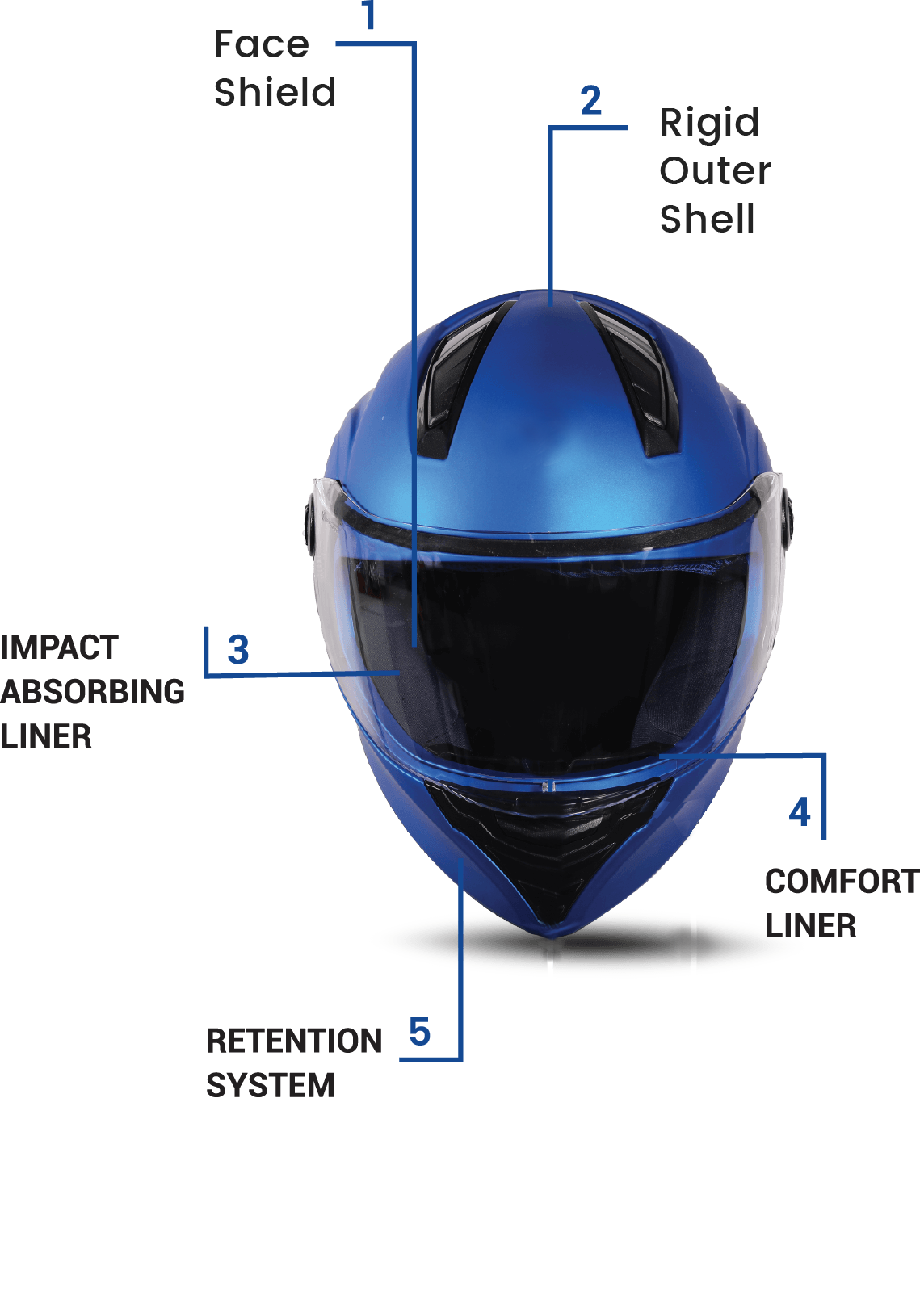Two-Wheeler Helmet
Every time you go out for a drive on a two-wheeler, wear a helmet properly strapped below the chin because helmets are very effective in reducing the severity of head injuries in a crash. In India 75% of the total vehicle population comprises only two wheelers and only 10% are commercial vehicles. Rest 25% includes cars and other vehicles. Thus, two wheeler riders have higher possibility of road accidents. Not wearing helmet causes fatal head and neck injury which is a major cause of death and disability. In developing countries 70% to 80% deaths are caused due to head injury in road accidents. The medical cost of treating a head injury is far greater than treatment of other diseases. The survivors of head injury are never able to live normal lives.

How Helmet Works
A helmet aims to reduce the risk of serious head and brain injuries by reducing the impact of a force or collision to the head. A helmet works in three ways:
- The soft material incorporated in the helmet absorbs some of the impact and therefore the head comes to a halt more slowly. This means that the brain does not hit the skull with great force.
- It spreads the forces of the impact over a greater surface area so that they are not concentrated on particular areas of the skull.
- It prevents direct contact between the skull and the impacting object by acting as a mechanical barrier between the head and the object.
These three functions are achieved by combining the properties of four basic components of the helmet that are described as:
- 1. The Rigid Outer Shell
This is the strong outer surface of the helmet that distributes the impact over a large surface area, and therefore lessens the force before it reaches to the head. Although the shell is tough, it is designed to compress when it hits anything hard. It provides protection against penetration by small, sharp and high speed objects.
- 2. The Impact Absorbing Liner
This is made of a soft, crushable padded material usually expanded polystyrene. This dense layer cushions and absorbs the shock as the helmet stops and the head tries to continue moving.
- 3. The Comfort Padding
This is the soft foam-and-cloth layer that sits next to the head. It helps keep the head comfortable and the helmet fitting snugly.
- 4. The Retention System (Chin Strap)
This is the mechanism that keeps the helmet on the head in a crash. A strap is connected to each side of the shell. Chin and neck straps, which are specifically designed to keep the helmet on during an impact, must be correctly used for the helmet to function as it is designed to.
Types of Helmet and Safety
- Full Face Helmet : It protects the head and face as well.
- Open Face Helmet : It protects the head but does not offer ample safety for jaw and chin.
- Modular Helmet : It can be used both as full face and open face. It protects the head and face when used as full face.
- Tropical Helmet : Basically, it is designed for South Asian and South-East Asian countries having high temperature and high humidity. It provides minimal safety.
Using a Right Helmet
- Always prefer high quality BIS standard, ISI marked helmet.
- Never forget to fasten the chinstrap of the helmet as it does not fall off from your head in case of an accident and protects your head.
- Like clothing, choose helmet wisely and confirm it suitably fits on your head.
- Choose a light coloured helmet as far as possible, as it offers high visibility during night or when it is dark.
- To confirm the quality of the helmet, enter CM/L number in the BIS Care App launched by Bureau of Indian Standards.
Penalty for Driving a Two-wheeler Without Helmet
As per the provision defined in Motor Vehicles Act, 1988 the penalty for riding a two-wheeler without a standard BIS helmet is as follows:
| Sec | Offence | Penalty |
|---|---|---|
| 194 D | Riding without helmets by driver & rider | Rs. 1,000/- |


